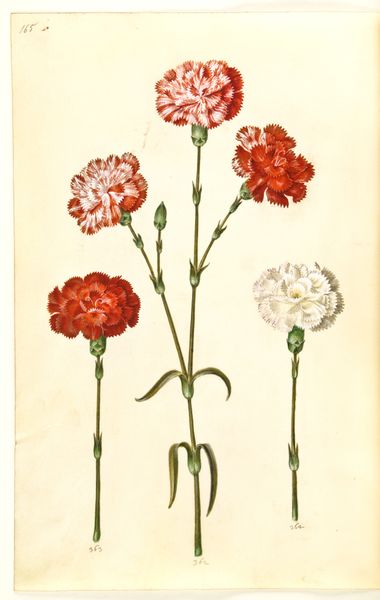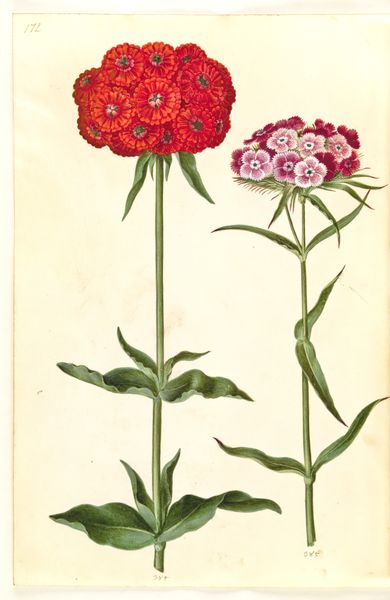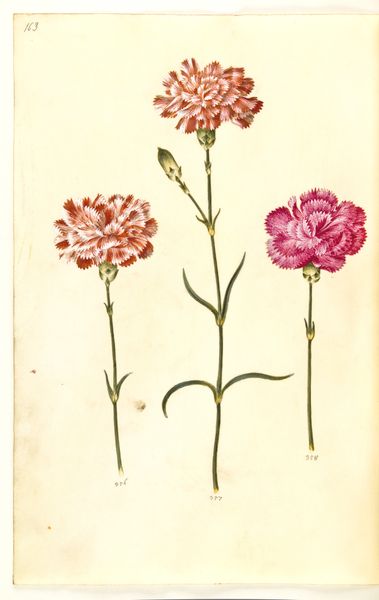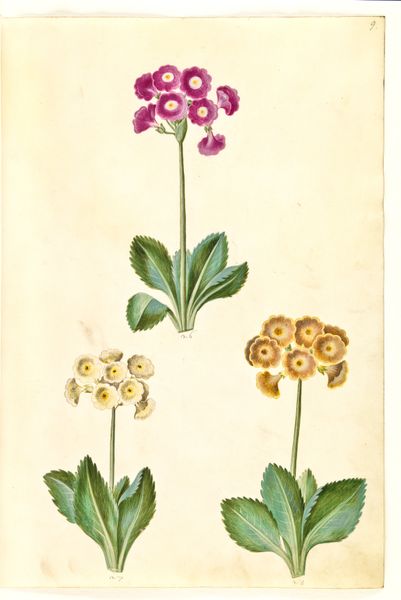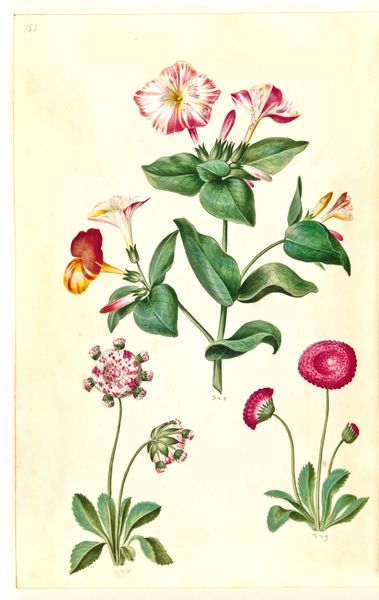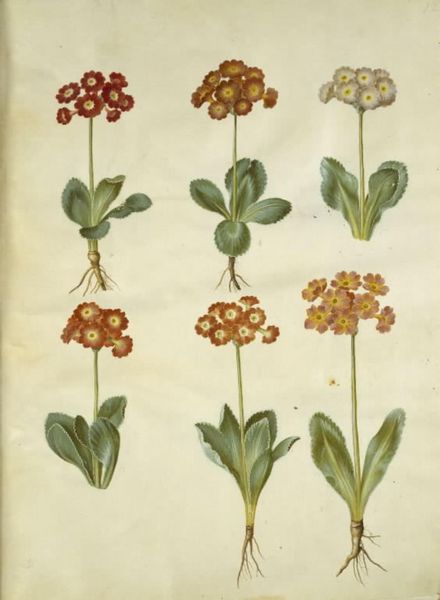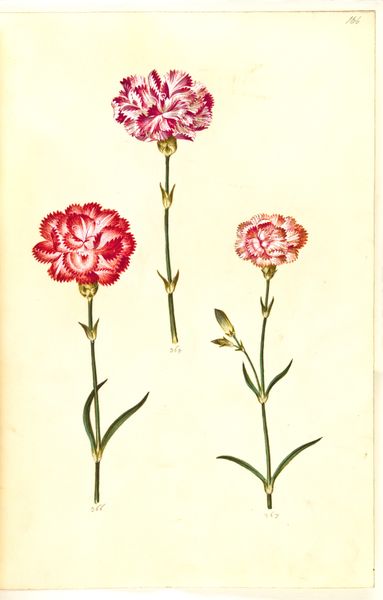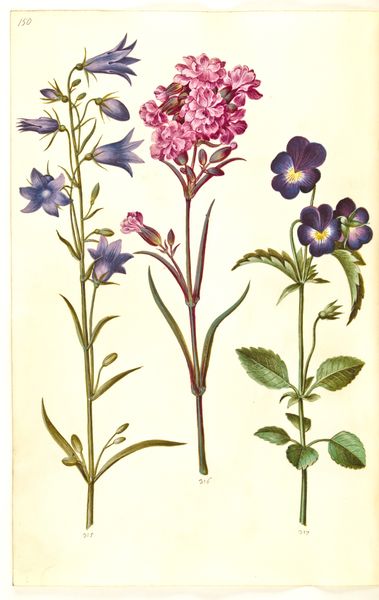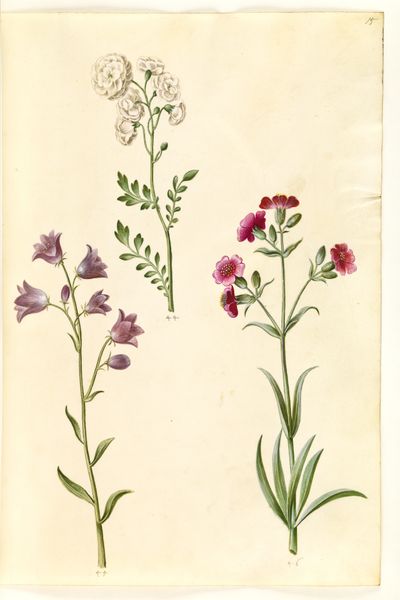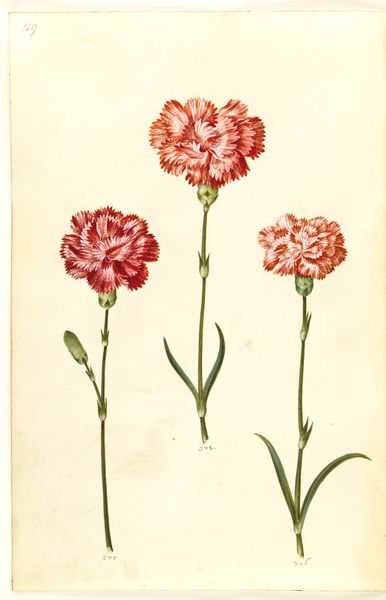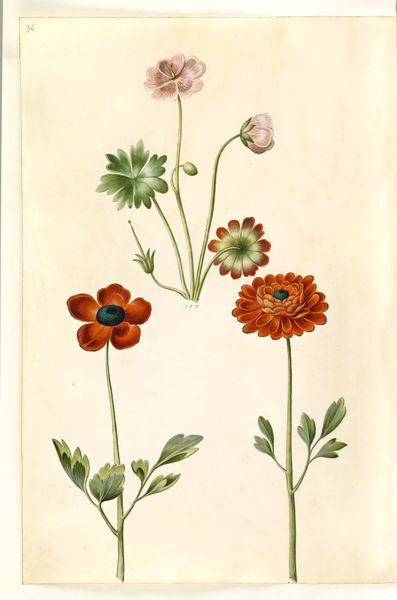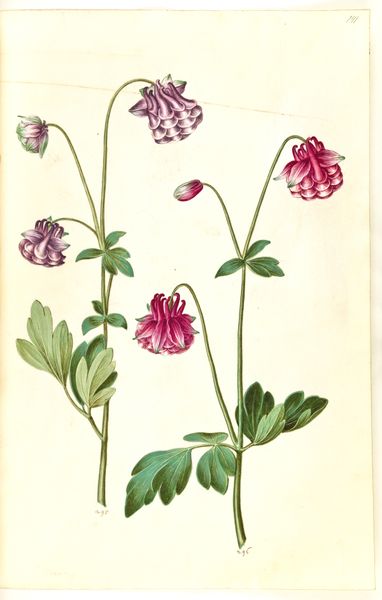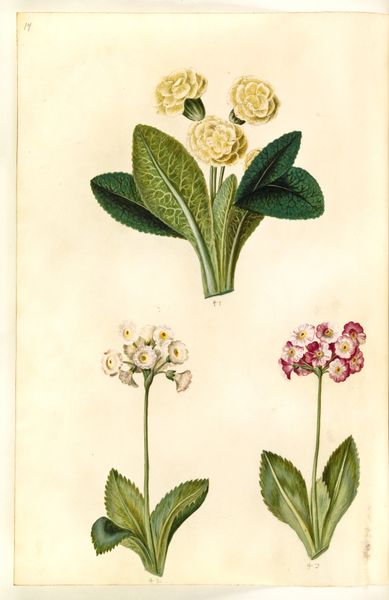
drawing, gouache, watercolor
#
drawing
#
water colours
#
gouache
#
watercolor
#
watercolour illustration
#
botanical art
Dimensions: 505 mm (height) x 385 mm (width) (bladmaal)
Hans Simon Holtzbecker made this botanical study of primula in the mid-17th century, probably using watercolour on vellum. The auricula, or primula, was a flower prized by collectors in Northern Europe during this period. Cultivated varieties were carefully traded and recorded, a practice that demonstrates the growing authority of empirical science in the 17th century. In Holtzbecker's Germany, wealthy merchants and landowners created elaborate gardens and greenhouses to cultivate exotic species of plants. Printed florilegia documented these collections and fuelled the fashion for rare flowers. Artists like Holtzbecker benefited from this new market, producing detailed portraits of individual specimens for wealthy patrons. This type of botanical art was used to classify the natural world and to display the owner's wealth, taste and scientific knowledge. Art historians use archival records, scientific literature, and social histories to better understand the cultural status of images such as this. Studying these images tells us how art is not just an aesthetic object but also a social document.
Comments
No comments
Be the first to comment and join the conversation on the ultimate creative platform.
